




| Greater Wax Moth (Galleria mellonella (Linnaeus, 1758)) |





|
|
Scientific name: Galleria mellonella (Linnaeus, 1758) Common name: Greater Wax Moth Other names: Honeycomb Moth French name: Fausse teigne de la cire, Grande teigne des ruches. Order: Lepidoptera Suborder: Heterocera Family: Pyralidae Subfamily: Galleriinae Wingspan: 29-41 mm. Biotope: The larvae develop in the wax combs of honey bees, especially in weak colonies. Geographic area: Temperate, tropical and subtropical regions worldwide. The distribution area is likely to expand as global warming continues. Flight time: May to October in mainland France. Number of generations : 2 to 6 annual generations depending on the temperature. Caterpillar: Quite long (2.5 to 4 cm), yellowish white in colour with a black head. Host plant: The caterpillar does not develop on a plant but inside the wax combs of bee colonies. It consumes the wax, the cocoons that protect the larvae, pollen and a little honey and propolis. Its galleries are surrounded by silky threads. |
The Greater Wax Moth has ash-grey forewings with black streaks. The anterior two-thirds are darker than the posterior third, which may also have darker streaks. The hindwings are whitish with darker veins. Males are smaller than females and have a distinctly concave margin of the forewings. This margin is straighter in females. In addition, females have forward-pointing labial palps that resemble the shape of a beak. The male's labial palps, curved upwards, resemble the shape of a snub nose. The antennae are filiform in both sexes. Adult moths do not feed and only live for a few days. Let us mention the Lesser Wax Moth (Achroia grisella) which also feeds in the wax combs. It is much smaller in size. Its wings are more silvery grey and are held flatter at rest. |
| [To know more about the Greater Wax Moth] [Next picture] [Top] |
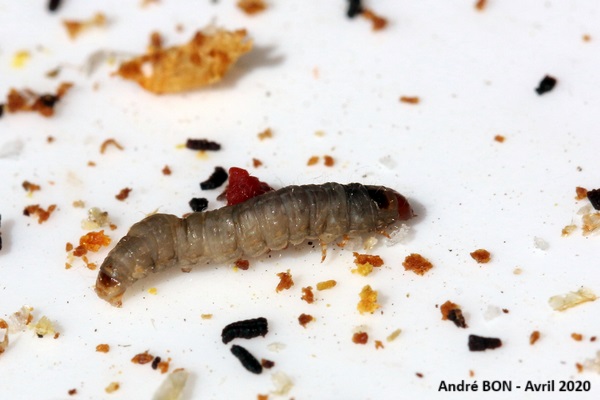
|
I found this caterpillar on the tray under one of my hives that had a weakened colony. I like moths but I prefer to see this species as little as possible. |
| [To know more about the Greater Wax Moth] [Next picture] [Previous picture] [Top] |
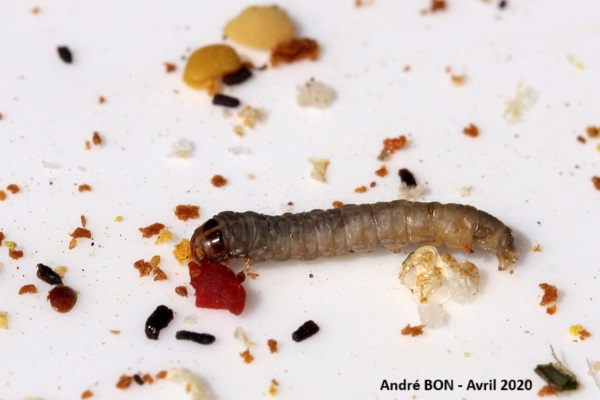
|
I read that the colours of these caterpillars may vary depending on their food. This one is quite dark. |
| [To know more about the Greater Wax Moth] [Next picture] [Previous picture] [Top] |
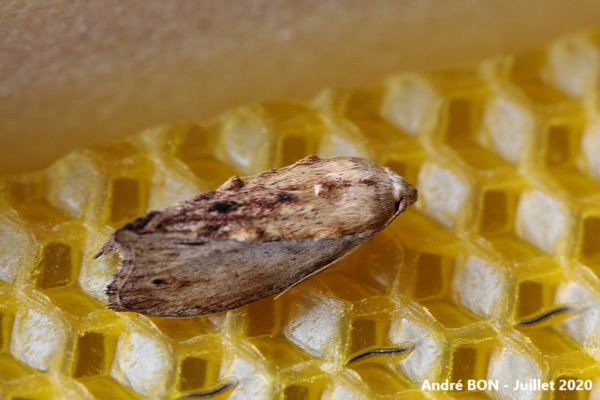
|
The concave shape of the margin of the forewings indicates a male. |
| [To know more about the Greater Wax Moth] [Next picture] [Previous picture] [Top] |
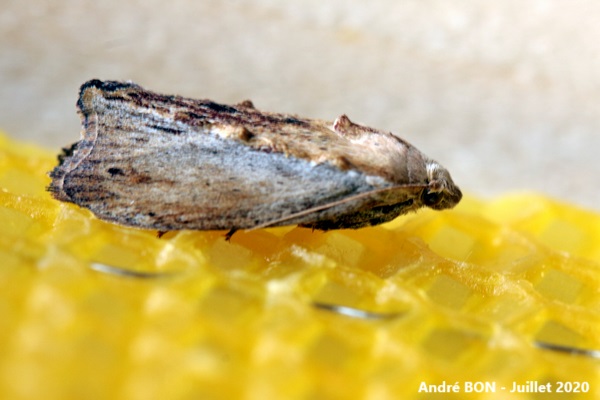
|
Here is another view of the same male. The front of the head does not resemble a beak. |
| [To know more about the Greater Wax Moth] [Previous picture] [Top] |
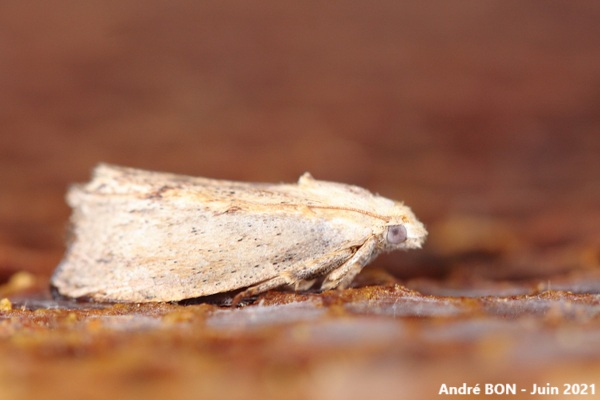
|
It's a little less clear but I think this specimen is again a male. The next time I have an infested hive I will concentrate on photographing females. |